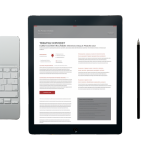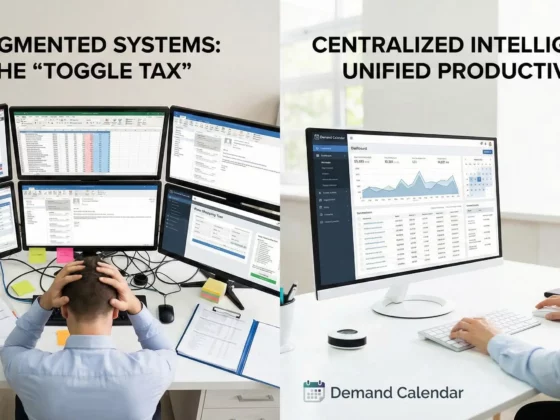Whether you’re looking to replace your legacy tech systems or considering swapping your Excel spreadsheets for a revenue management system (RMS), there’s a lot to think about when choosing the right solution for your business, especially when it comes to features. What do you actually need and what’s nice to have?
Essential functionality
1. Intelligent, scalable automation
A modern RMS can help you scale limited revenue management resources by automating manual processes. For example, turning on automated pricing can help you capably handle pricing for single hotels, up to a large group of properties.
But can you really trust automation to price intelligently with unstable market conditions? You could be filling rooms but not maximizing profits, or leaving money on the table when guests choose OTAs over direct bookings. That’s not desirable, even when resources are strained.
Automation should not be an ‘on’ or ‘off’ decision.
Controlled automation is key
Consider an RMS that offers controlled automation, so you have the flexibility to react to ever changing conditions without needing to sit in front of your computer all day. You can decide what’s automated, what’s not, and what you want to manage with a mix of both approaches.
For example, with Duetto, you can specify which segments, room types, or days/seasons to run automatically. Getting even more granular, you can set the automation to:
- Jump in only once your property has reached a certain occupancy level.
- Run up until a number of days before arrival.
- Only publish rates when below an occupancy threshold or on certain days of the week.
- Act upon numerous other filters or rules.
We also safeguard automation by providing user-generated restriction levels, so you can be assured that automation doesn’t create additional risks, and the pricing algorithms can intelligently (and autonomously) run and respond to changes in your business.
2. Instant innovation
The market is constantly changing, and so is technology, affecting distribution, marketing, and personalization. You need a revenue system that keeps up with this dynamic landscape.
Traditional RMSs require costly and time-consuming updates, management approval, and IT support, preventing you from being competitive. In contrast, with cloud-based RMSs, like Duetto, you’re always on the latest version.
You also need a system that can help you react fast, which is where an optimizer comes into play. It runs automatically but you can also manually trigger it between optimizations to respond to any changes in the market.
But it’s not just functionality that’s important here — you also need to consider the pricing methodology behind your RMS.
At Duetto, we use Open Pricing to allow you to independently apply a demand-based yielding strategy to segments, room types, and distribution channels in real-time. While your competitors are spending time trying to build forecasts and budgets around old data and guesswork, your Open Pricing strategy will help define what you forecast, and how you budget.
3. Comprehensive and configurable data sets
Property management system (PMS) and central reservation system (CRS) data has long proved valuable to revenue strategists. But, it’s clear that hotels can no longer rely on same time last year (STLY) metrics.
If you want to move forward you need to look forward, and not focus solely on the rear-view mirror. You need an RMS that also ingests other integrated data sources in order to objectively assess demand.
Using web traffic data
Web traffic data is vital for assessing potential demand. Pulled from your booking engine, website data includes bookings, regrets, and denials on brand.com. Forward-looking website data can help you gauge consumer appetite and price sensitivity. With Duetto, you have the option to run a short-term forecast, putting more weight on short-term pick-up rather than STLY comparisons. This enables you to quickly respond to changes in demand.
Using multiple data sources
While there is a tendency to want to ingest as many data sources as possible into pricing algorithms, doing so also creates a risk. If you aren’t meeting your objectives, how do you know which data sources are responsible or if there are any other factors at play?
To overcome this risk, we update our algorithms with data sets that are proven to help predict demand. This means you can strategically connect to other data sets of your choosing, providing a level of transparency to help you decide what makes the most sense at any given time.
Using competitive data sources
Competitive data sources are often tempting to overuse, even for highly experienced revenue teams, because they perceive to help ensure you don’t go too far over or under what the going rates are. The flip side is that often your competitors are following similar signals, and nobody is actually seizing on true demand patterns — you’re all leaving money at the table. With Duetto, you can make informed pricing decisions driven by competitive pace data versus competitive pricing data.
4. Enterprise strategy
There is consensus that enterprise revenue teams need to automate, collaborate and innovate in new ways that intelligent, flexible RMS technology can facilitate. So, whether you’re looking for a corporate-level solution or want to empower those who now find themselves in cluster roles, your RMS needs to be able to set parameters for you and your extended team to be able to work within.
This may include:
- Being able to set min/max bounds on rates, to help you control and safeguard automated pricing optimization.
- Setting pricing rules so your strategies remain consistent while pricing is automatically optimized in line with fluctuating market demand.
With Duetto, you can set scalable strategies and roll them out across regions or entire portfolios in minutes. You can create guidelines by brand, property type, region, or something else that your business defines.
5. Flexible reporting
Your new RMS should offer a flexible reporting structure that enables you to define which metrics are most important to track and determine who should be notified. As you move away from STLY reporting, you need to be able to define the benchmark period most critical to your business.
Look for a system that:
- Enables you to quickly and efficiently analyze week-on-week pick up trends, so you can adjust your pricing strategy in line with demand.
- Provides dynamic reporting, which triggers against certain benchmarks, like if booking levels fall below a certain threshold.
- Gives you access to group displacement down to the segment level, along with rate recommendations by room type and alternate stay date, and property options, if group bookings are important to your business.
Choosing an RMS is complicated!
Selecting the right RMS for your business is easier said than done, with lots of vendors available at multiple price points.
Before you start your search, we’d recommend assessing what features are important to your property and categorizing these by priority – what’s essential for you and what’s nice to have. Once you’ve got your list, you can then find vendors who offer products with the functionality you’re looking for.
Why not have a read of our ‘Ultimate buyer’s guide to revenue management systems’ for an overview of top RMSs on the market, or reach out to our team to book a demo to see all our features in action.











